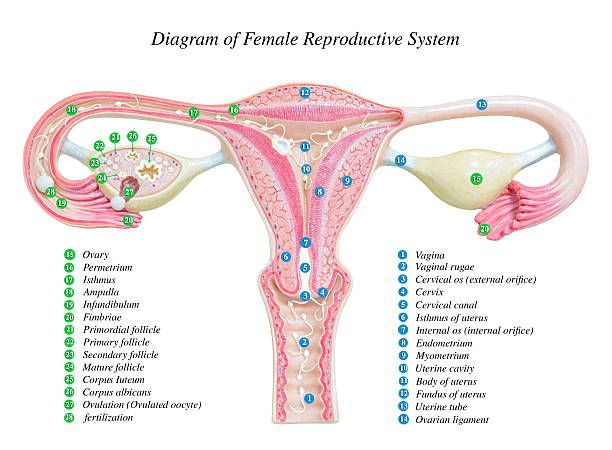What Is Grade 1 Cervical Cancer
Stage one cervical cancers is generally divided into Stage 1A and Stage 1B as they are both in the neck of the womb yet one is slightly larger than the other. Early-stage cervical cancer this usually includes stages 1A to 1B1.

Pin On Healthy Kidneys Sonson Healthy
Advanced-stage or metastatic cervical cancer this usually means stage 4B.

What is grade 1 cervical cancer. Cells are graded from 1 to 3. The tumor has grown 3 to 5 mm into the tissue of the cervix. The tumor is 2 cm or less in size and has grown 5 mm or more into the cervixs tissue.
These tumors tend to grow and spread slowly. Stage 1A1 The cancer is less than 3mm deep into the cervix. But other factors can also affect your treatment options including the exact location of the cancer within the cervix the type of cancer squamous cell or adenocarcinoma your age and overall health and whether you want to have children.
Grade 2 tumors have between 50 and 94 of the cancer tissue forming glands. An unanticipated problem was encountered check back soon and try again. Or rarely it could develop into cancer.
Stage IV cancer has spread to distant areas of the body. Cervical intraepithelial neoplasia may be classified according to how much epithelial tissue is affected. Each of these stages are further divided into 2 sub stages as well.
Low-grade neoplasia CIN 1 refers to dysplasia that involves about one-third of the thickness of the epithelium. The cancer is only in the cervix. It has not yet jumped to other tissues or organs.
Stage 1A Cervical Cancer. Cervical dysplasia can range from mild to severe depending on the appearance of the abnormal cells. If the cancer comes back after initial treatment this is known as recurrent cancer.
Cervical intraepithelial neoplasia grade 1 CIN 1 or low grade squamous intraepithelial lesion LSIL up to one third of the thickness of the lining covering the cervix has abnormal cells. On the Pap test report this will be reported as a low- or high-grade squamous intraepithelial lesion SIL or sometimes as atypical squamous or glandular cells. Stage 1 means that the cancer is only in the neck of the womb cervix.
Some people need chemoradiotherapy too. Stage 1A Stage 1A1 cancer. Cervical cancer cells are classified according to the degree of abnormality of the cells under a microscope.
Grade 3 and Grade 4 tumors tend to grow rapidly and spread faster than tumors with a lower grade. CIN 2 refers to abnormal changes in about one-third to two-thirds of the epithelial layer. The cancer is small and can only been seen with a microscope.
In contrast the cells and tissue of Grade 3 and Grade 4 tumors do not look like normal cells and tissue. This stage is also called in-situ. Locally advanced cervical cancer this usually includes stages 1B2 to 4A.
Stage 1 cervical cancer is the stage in which the cancer is localized in the cervix. CIN-1 low-gradeinvolves the lower 13 or less of the epithelium whereasthe more significant CIN-2 and CIN-3 high-grade progress toinclude the entire thickness of the epithelium. Grade 1 tumors have 95 or more of the cancer tissue forming glands.
Dysplasia could go away on its own. Cancer cells begin to reproduce in 1A stage but are small enough to be seen only under a microscope or colposcope. In higher-grade cancers grade 3 more of the cancer cells are disorganized and do not form glands.
In lower-grade cancers grades 1 and 2 more of the cancer cells form glands. Grade 1 looks the most like normal cells while 3 looks very abnormal. Though bigger than a stage 1A tumor the cancer remains contained in the cervical tissue.
In Grade 1 tumors the tumor cells and the organization of the tumor tissue appear close to normal. The stage of a cervical cancer is the most important factor in choosing treatment. Stage 1 cervical cancer.
Surgery is the main treatment. The proportion of cervical epithelium exhibiting dysplastic cells determines the grade of the dysplasia. The higher the stage number the larger the tumor and the more it has spread.
Stage 1 cervical cancer is divided into two stages. Stage I through Stage III are for cancers that havent spread beyond the primary tumor site or have only spread to nearby tissue. It hasnt spread to the surrounding tissue nearby organs or anywhere else in the body.

Pin On Donna Jean Ford 4 16 60 2 14 09

Royalty Free Female Reproductive System Pictures Images And Stock Female Reproductive System Female Reproductive System Anatomy Reproductive System

Icymi Annual Pap Smears Are A Thing Of The Past Femestella Pap Smear Smears Reproductive Health

10 Pack Mini Reflexology Chart Essential Oil Use Guide Etsy Reflexology Foot Chart Essential Oil Chart Foot Reflexology

Cervical Intraepithelial Neoplasia Cin Grades Healthy Blogs Cervical Cervical Carcinoma

Pin On Health And Medicine Illustrated

Hysterectomy Hysterectomy Body Workout At Home Medical Knowledge

Cervical Intraepithelial Neoplasia

Pin On Third Party Reproduction

Pap Smear Detecting Ovarine And Uterine Cancers Pap Smear Urinary Tract Infection Uterine Cancer

Pin De Rock Attracted En Medical Study Info

Inside Out Anatomy The Reproductive System Worksheet Education Com Reproductive System Female Reproductive System Life Science Middle School

Perhaps You Have Been Told That You Have A Grade 1 Spondylolisthesis Do You Know What This Really Means Or Why You Have That P Spondylolisthesis Grade Grade 1




